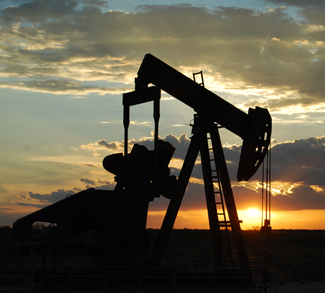If you’re an American driver, it might be difficult to look past low gas prices and toward the larger political landscape. After all, when getting from point A to point B becomes cheaper than it has been for some time, political and economic tensions a world away hardly seem of consequence.
However, although oil prices have been dramatically and consistently lower in recent weeks and months, worsening disagreement and mistrust between Iran and Saudi Arabia has seen oil prices rising somewhat, and may bring about continued uncertainty if things don’t return to some kind of balance.
What’s Going on in the Middle East?
Although oil prices remain low across the developed world – February forecasts are calling for a price of around $37 per barrel – prices rose by as much as 4 percent across Europe this past week. We have Middle East tensions to thank for it.
According to Richard Mallinson, an analyst for Energy Aspects: “What is coming back to the surface is how deeply divided and complex the Middle East is at present.”
Whereas OPEC nations have historically been able to put their differences aside long enough to reach an accord on matters concerning oil prices and supply levels, unrest and mutual distrust have fractured this already tenuous alliance. This is particularly true of Saudi Arabia and its neighbors: Political strife between these nations has sidelined economic cooperation and has created an effective vacuum of central leadership and consensus.
As a result, OPEC nations are now competing against each other for customer loyalty the same way China and India do, by manipulating prices in a race to the bottom. Simply put, oil prices are historically low because OPEC countries no longer cooperate with each other – instead, they are competing.
In other words, it sounds startlingly like the spirit of capitalism has come, perhaps temporarily, to the Middle East.
The Heart of the Conflict
Iran, with Venezuela in tow, has recently been calling for a cut in oil production: a course of action that would almost certainly see oil prices rise once again. This recommendation has largely been ignored by Saudi Arabia, Kuwait, and the United Arab Emirates. At a December meeting, OPEC leadership failed to reach a consensus on anything of substance, let alone production targets.
Of course, while tensions between Saudis and Iranians are arguably at the heart of this, a great many other factors are in play as well. For example, as part of a bipartisan spending agreement reached late last year, the U.S. has lifted its ban on crude oil exports for the first time in 40 years. As a result, analysts are saying that the U.S. could bulk up the world’s supply of oil even further, which could help keep things stable if there’s a global shortage or if OPEC cuts output.
In other words, we are uniquely positioned to reduce our dependence on Middle East oil and are better equipped to weather further destabilization of the region.
Another of the myriad factors in play is weather and climate. We are seeing unseasonably warm weather across much of the world, which has further depressed the price of natural gas and oil. Whether you blame long-term effects like climate change or short-term outliers like El Niño, the result is the same: cheap oil for everybody.
Unfortunately, the same prognosticators calling for continued low prices for oil also worry that tensions between Iran and Saudi Arabia could fuel unrest in other parts of the region, like the violence in Yemen and the Syrian civil war.
What This Means for Investors
Back in the United States, this continued tension among the world’s oil-producing nations has meant a rise in the sales of large vehicles. There has also been a fall in stock prices for alternative energies, the most promising of which remains solar power. It’s plain to see that both of these outcomes betray American consumers and investors as somewhat shortsighted.
A good play in the long game is investing in oil while prices are low, while still profiting from short-term disruptions by making longer-term investments in alternative energies. No matter which horse you want to bet on, it simply doesn’t make much sense to wait until OPEC gets its act together and the price of oil climbs back to where it was.
The opinions, beliefs, and viewpoints expressed by the authors are theirs alone and don’t reflect any official position of Geopoliticalmonitor.com.




